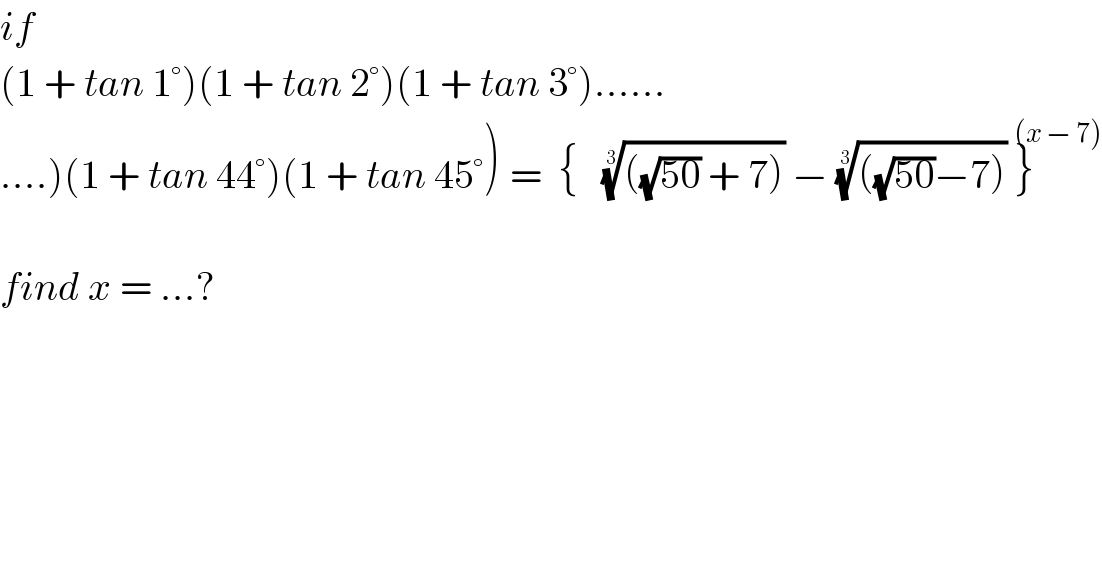
Question and Answers Forum
Question Number 1999 by Fitrah last updated on 29/Oct/15

Answered by Yozzi last updated on 29/Oct/15
![The given equation can be written as d=c^(x−7) where c,d>0 since tan(r^° )>0 ∀r∈[1,45]⇒1+tan(r^° )>0 and (√(50))+7>(√(50))−7⇒((√(50))+7)^(1/3) >((√(50))−7)^(1/3) ⇒((√(50))+7)^(1/3) −((√(50))−7)^(1/3) >0. ∴ lnd=lnc^(x−7) ⇒lnd=(x−7)lnc ⇒x−7=((lnd)/(lnc))=log_c d x=7+log_c d x=7+log_((((√(50))+7)^(1/3) −((√(50))−7)^(1/3) )) (Π_(r=1) ^(45) (1+tan(r^° )))](Q2003.png)
Commented by Rasheed Soomro last updated on 29/Oct/15

| ||
Question and Answers Forum | ||
Question Number 1999 by Fitrah last updated on 29/Oct/15 | ||
 | ||
Answered by Yozzi last updated on 29/Oct/15 | ||
![The given equation can be written as d=c^(x−7) where c,d>0 since tan(r^° )>0 ∀r∈[1,45]⇒1+tan(r^° )>0 and (√(50))+7>(√(50))−7⇒((√(50))+7)^(1/3) >((√(50))−7)^(1/3) ⇒((√(50))+7)^(1/3) −((√(50))−7)^(1/3) >0. ∴ lnd=lnc^(x−7) ⇒lnd=(x−7)lnc ⇒x−7=((lnd)/(lnc))=log_c d x=7+log_c d x=7+log_((((√(50))+7)^(1/3) −((√(50))−7)^(1/3) )) (Π_(r=1) ^(45) (1+tan(r^° )))](Q2003.png) | ||
| ||
Commented by Rasheed Soomro last updated on 29/Oct/15 | ||
 | ||